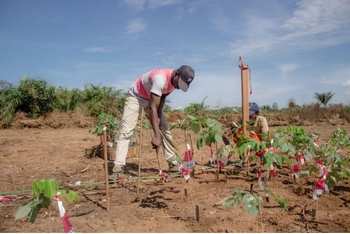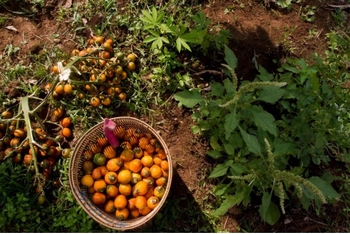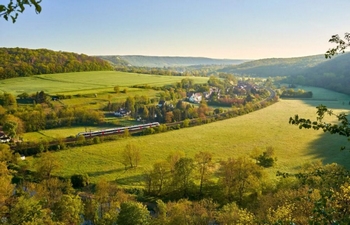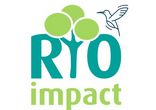
Can carbon markets supercharge nature-based solutions to climate change ?
Sustainable finance forum discusses realities and regulations of controversial mechanisms.
Market economics have done much to cause the climate crisis. But can they help solve it ?
Carbon markets and sustainable finance taxonomy are two rapidly growing market mechanisms that promise a surge in climate finance and a simultaneous decline in greenhouse gas emissions.
Yet, these benefits can only occur with proper regulation and the inclusion of people living and working in the landscapes where carbon offsetting takes place. This hotly debated topic brought together hundreds of participants for a digital forum hosted by the Finance for Nature Platform, a joint initiative of the Global Landscapes Forum (GLF) and the Grand Duchy of Luxembourg.
The half-day event, which was held on 30 March, discussed the on-the-ground realities of major decisions made at last November’s COP26 climate summit. These included rules for the application of Article 6 of the Paris Agreement on climate change – a legal provision that addresses carbon markets – and a commitment from global leaders to promote the financing of sustainable land use. The significant increase in interest in nature-based solutions to climate change, and the need for much more funding to realize them, also featured high on the agenda.
Speakers from the worlds of finance, public policy and academia took part, including Gabriel Labbate, head of the climate mitigation unit and global team leader of the UN-REDD program at the UN Environment Programme (UNEP) ; Nathalie Roth, founder of 4Climate ; and Ariel Brunner, senior head of policy at Birdlife Europe and Central Asia.
There is still a long way to go, and efforts need to be strengthened
.
“There is still a long way to go, and efforts need to be strengthened,” said Carole Dieschbourg, Luxembourg’s minister for the environment, climate and sustainable development. “We must acknowledge that most of the fund flows for nature-based solutions to climate change have been driven by a climate adaptation approach. Other key topics, such as biodiversity conservation and land degradation neutrality, deserve a higher level of attention.”
$olutions for solutions
Nature-based solutions to climate change can be broadly defined as ways in which nature is used to address societal challenges and achieve the Sustainable Development Goals. According to the UN Global Compact, nature-based solutions can provide more than a third of the climate change mitigation needed to reach goals to curb global warming by 2030.
However, UNEP says more than USD 536 billion in finance will be needed each year by 2050 to achieve climate, biodiversity and restoration targets. This is almost four times the current level of investment. At present, USD 130 billion per year flows into nature-based solutions, with public funds making up 86 percent and private finance 14 percent.
Lots of companies want to be on the right side of history
.
“Lots of companies want to be on the right side of history and want to do their fair share along the high ambition path to net-zero,” said Anna Lehmann, global climate policy director at Wildlife Works Carbon. “It’s exciting to see that this is being discussed in a more transparent way, about the integrity of corporate claims and what they actually do with the carbon.”
How do they work ?
Carbon markets can play a major role in financing nature-based solutions. The trading of emission allowances encourages companies and countries to reduce their carbon footprints. Credits are generated from projects, such as solar farms or forest conservation, and from government cap-and-trade schemes that put a price on emissions caused by major polluters.
Sellers in the carbon market create carbon credits by reducing their emissions, such as a farmer who adopts sustainable land-use practices. The credits are then listed on a registry and sold, generating income for the sellers, which are often farmers and local communities. Buyers, usually corporations or governments, gain the right to emit a set amount of carbon dioxide per credit that they buy at a market price.
UNEP’s Labbate estimated that the voluntary carbon market – where organizations can choose to purchase carbon credits to offset their emissions, as opposed to compliance through government regulation – will range from USD 10 billion to USD 40 billion per year by 2030.
Local outlook

The growth in the voluntary carbon market is partly driven by local demand for carbon finance. For instance, Lehmann described how farmers in Colombia are primarily motivated by the health benefits that can blossom from carbon markets, either from market-driven activities that improve the health of their landscapes or from services they can then afford from the carbon money that they receive.
In Indonesia, farmers have a similar interest in such co-benefits, according to Paul Burgers of the Dutch social enterprise CO2 Operate B.V. They focused on resilient livelihoods and improved standards of living in their communities rather than the reforestation aspect of carbon markets or the potential for wealth accumulation.
It’s about giving [local people] the tools to be flexible
.
“It’s about giving [local people] the tools to be flexible, to react to changing environments and to still make a good living,” said Burgers. “Listen to the farmers first and start working from their point of view. We should implement carbon finance by looking at the targets of local communities, so they can build resilient livelihoods. They want stable profits, not maximum profits. They don’t want to get rich.”
4Climate’s Roth, however, noted the challenges for growth, including scalability, which is hampered by the limited participation of farmers. The concept of additionality – whether an intervention leads to ‘additional’ emissions reductions that would not have occurred in the absence of such a project – is also important for them to gain carbon market eligibility, while it is difficult to persuade farmers to abandon their land-use habits in favor of new business models.
“We need to work toward educating the farmers about this new potential revenue stream and to get them up higher in the carbon value chain, not only in the commodity value chain,” said Roth. “Education of the communities really helps to get the funding down on the ground, and that is missing a bit at the moment.”
Beyond forests

The first panel discussion, which was moderated by carbon finance consultant Till Neef, examined how carbon markets can boost financing beyond forests to include other land-use sectors, and how these markets provide opportunities for farmers in the Global South to participate at local level.
Rabobank’s Jelmer van de Mortel outlined the bank’s Acorn program, which offers an agroforestry-led carbon removal system for smallholder farmers who are willing to sequester carbon on their land by planting trees on their farms. The aim is to give them access to the carbon market at low cost, he said, noting that 80 to 90 percent of the revenues flow back to the farmers.
A viewer from Zimbabwe later asked how to monetize his carbon footprint through a bamboo plantation, raising the challenge of additionality : how would he be able to prove his property had captured emissions that justified carbon credits ? Burgers suggested planting a new bamboo forest in open areas occupied by cattle, leaving little room for questions about whether the landscape was more climate conscious than before.
Tax time

The second panel discussion dealt with sustainable finance taxonomy, which involves national or regional rules that determine whether or not an investment is sustainable.
The speakers focused primarily on the E.U.’s green taxonomy, which entered into force in July 2020. Its first delegated act on sustainable activities for climate change mitigation and adaption has applied since 1 January 2022. This act defines the technical screening criteria for economic activities in nine categories, including forestry, that can make a substantial contribution to climate change mitigation and adaptation, according to the E.U.
Birdlife’s Brunner gave a presentation outlining the E.U.’s taxonomy, which is part of the region’s Green Deal aiming to mobilize EUR 1 trillion in sustainable investments over the next decade. He discussed problems with the first delegated act, particularly the lack of carbon drawdown requirements for the agriculture and forestry sectors, as emissions continue to increase from burning trees and clear-cutting.
“Taxonomy can bring more clarity and standardization while channeling more investments into the forestry sector,” said Anna Begemann, a researcher at the European Forest Institute. “However, this taxonomy is no obligation to invest more sustainably.”
In closing remarks, Luxembourg’s Dieschbourg announced the 6th GLF Investment Case Symposium to be hosted again by the Luxembourg-GLF Finance for Nature Platform in December 2022.
“It will highlight ways to increase finance for nature-based solutions and to catalyze private-sector engagement,” Dieschbourg said in conclusion.
To learn more, apply for the Carbon Finance Learning Program, a series of four webinars in May, July, September and November 2022, hosted by the GLF’s Landscape Academy online learning platform. Each webinar will feature up to three experts and is designed to build the capacity of policy stakeholders, ecopreneurs and local landscape project developers to mobilize carbon finance, while familiarizing young professionals and students with related concepts.
Press release by the Global Landscapes Forum
Photos :
- Mixing species on plots of farmland can help maximize yields and carbon sequestration. Fiston Wasanga, CIFOR
- Palm nut fruits harvested from an agroforested landscape in Jambi, Indonesia. Tri Saputro, CIFOR
- The E.U. Green Deal sets out strategies for the group of nations to be collectively net-zero by 2050. Joachim Aspenlaub Blattboldt, Flickr
















